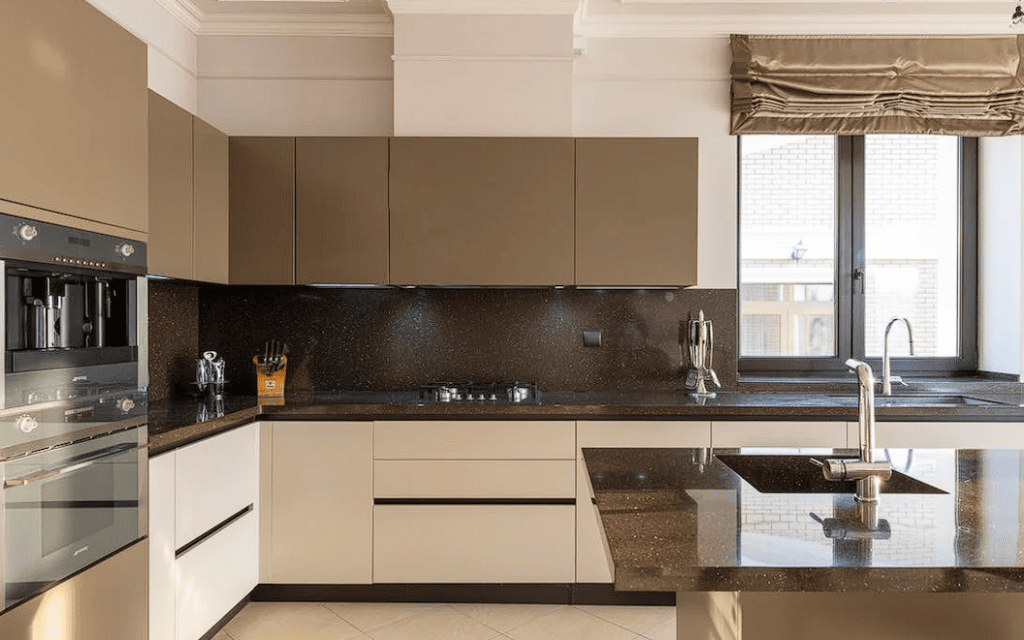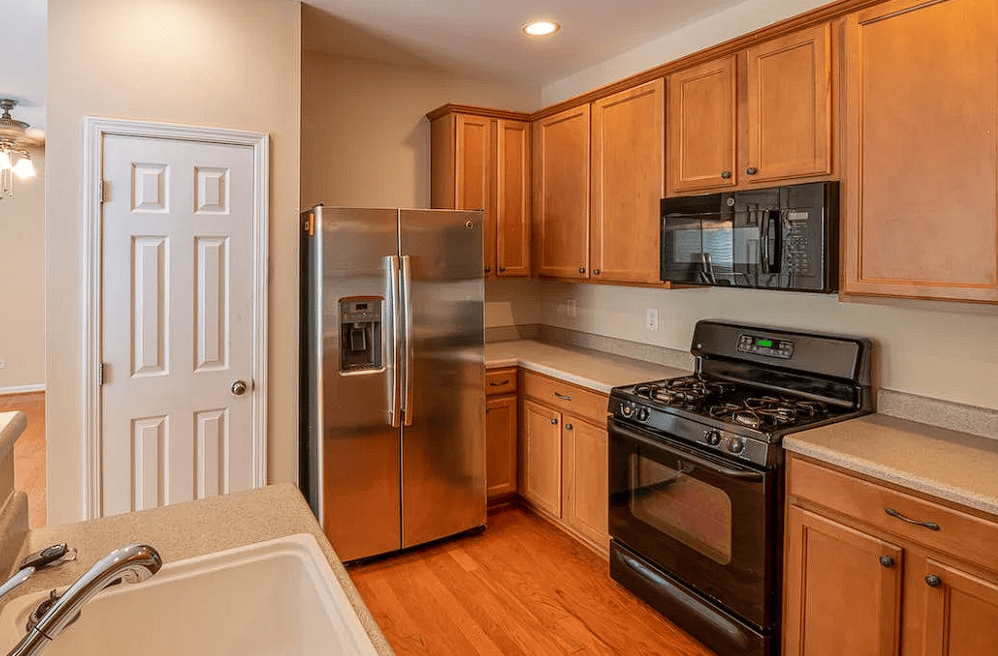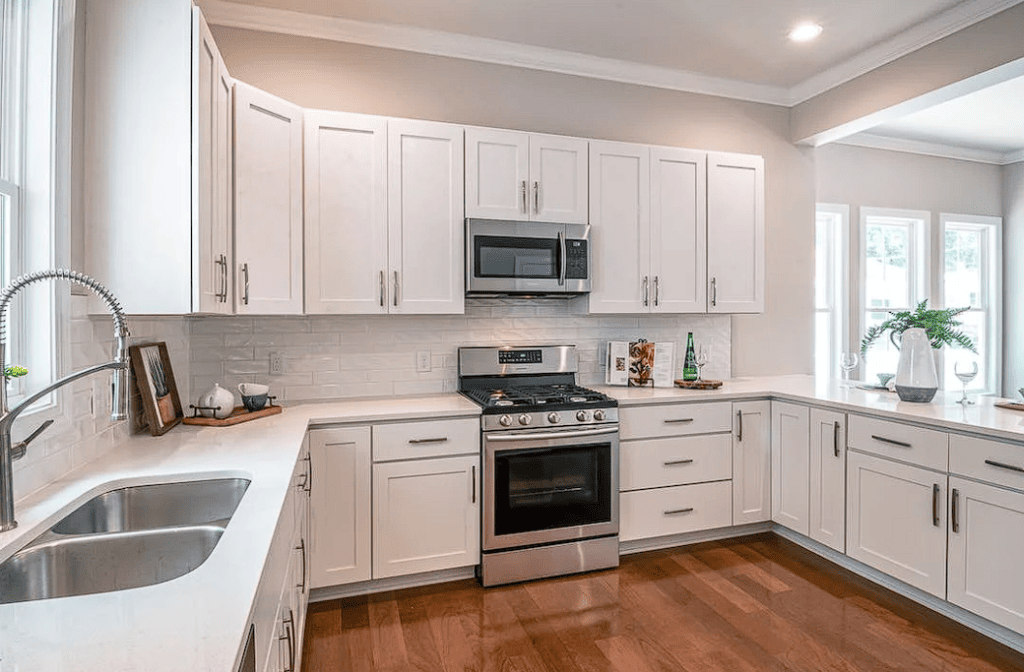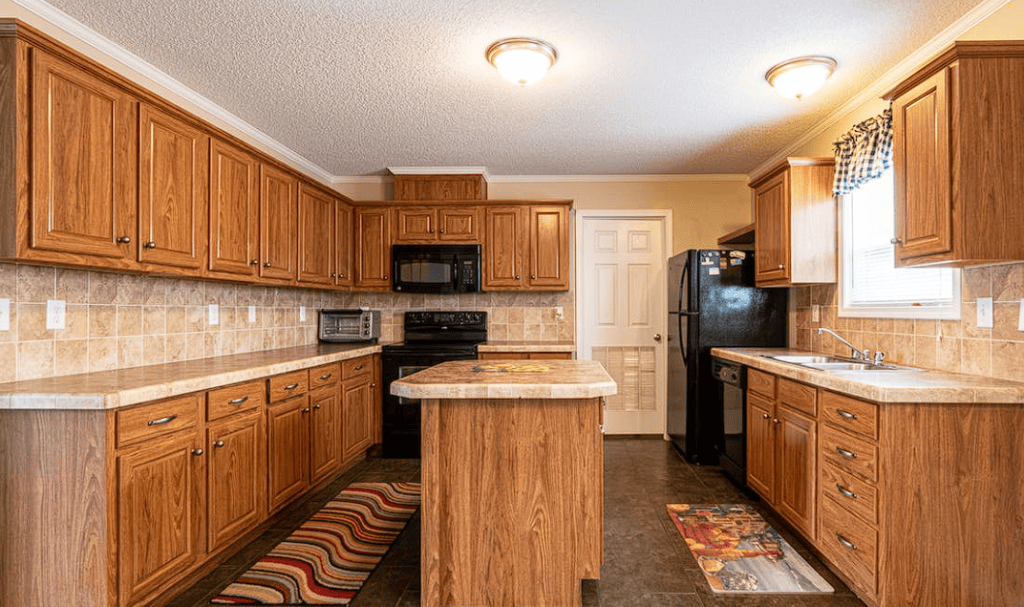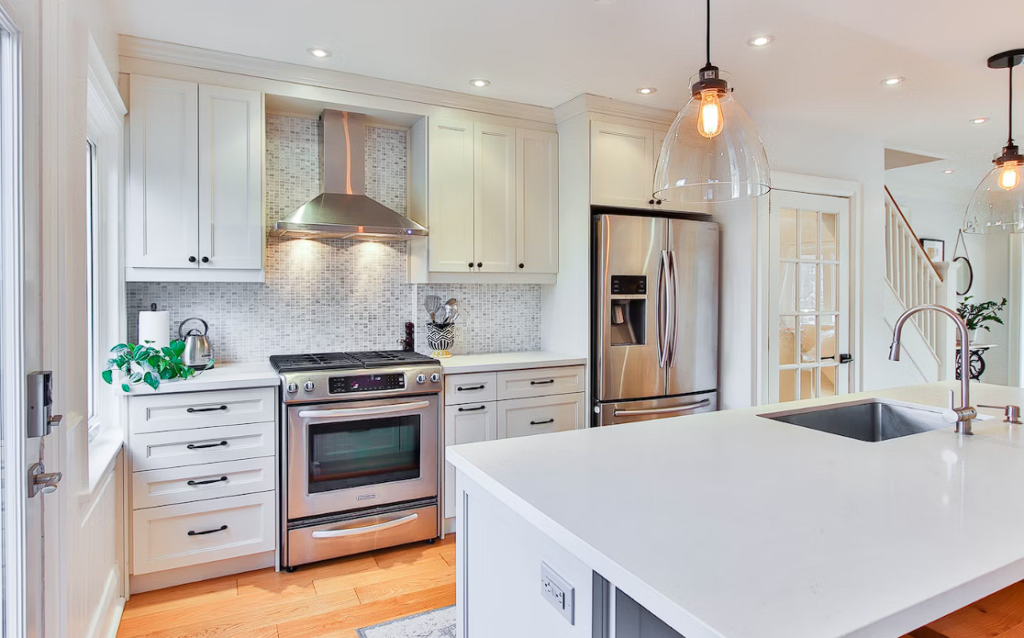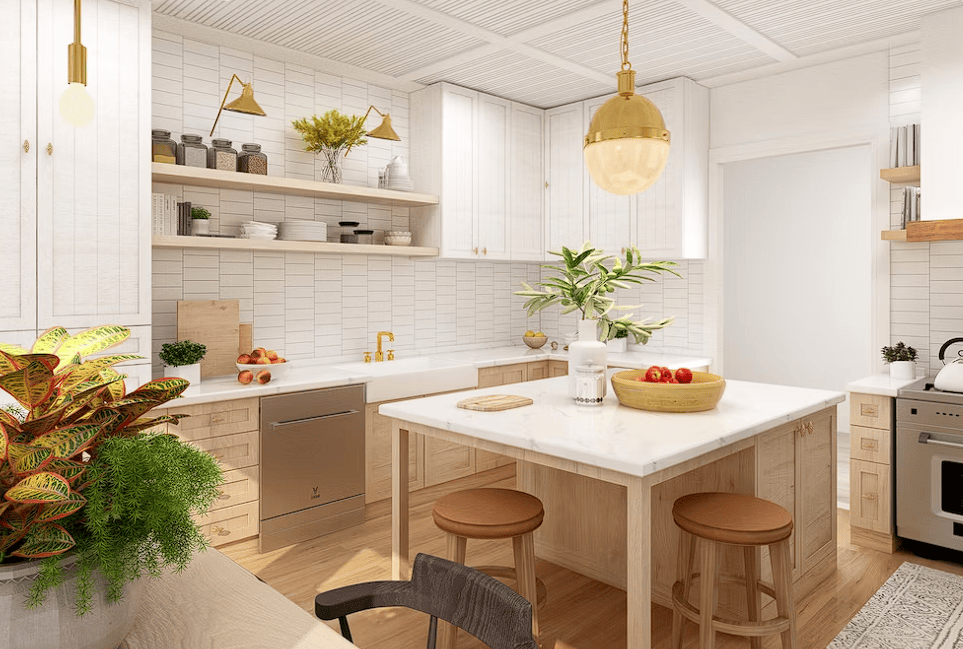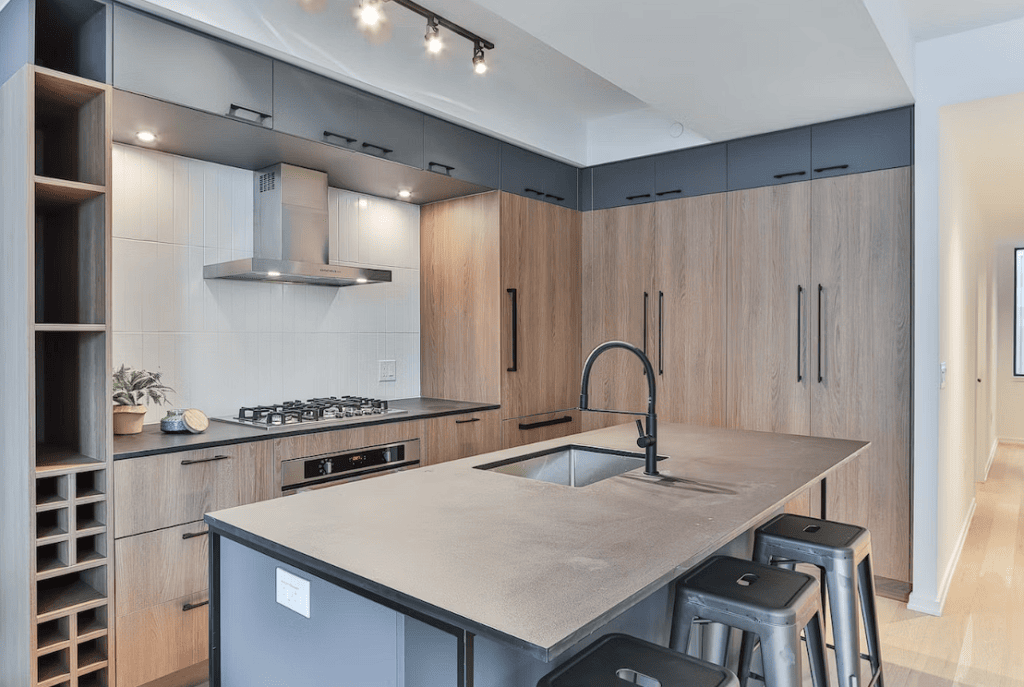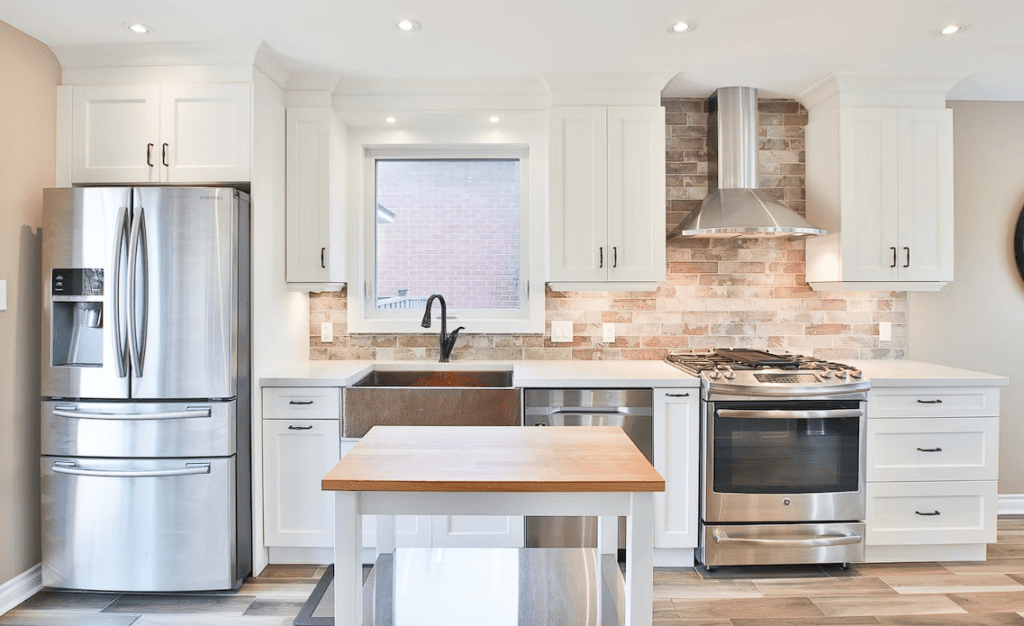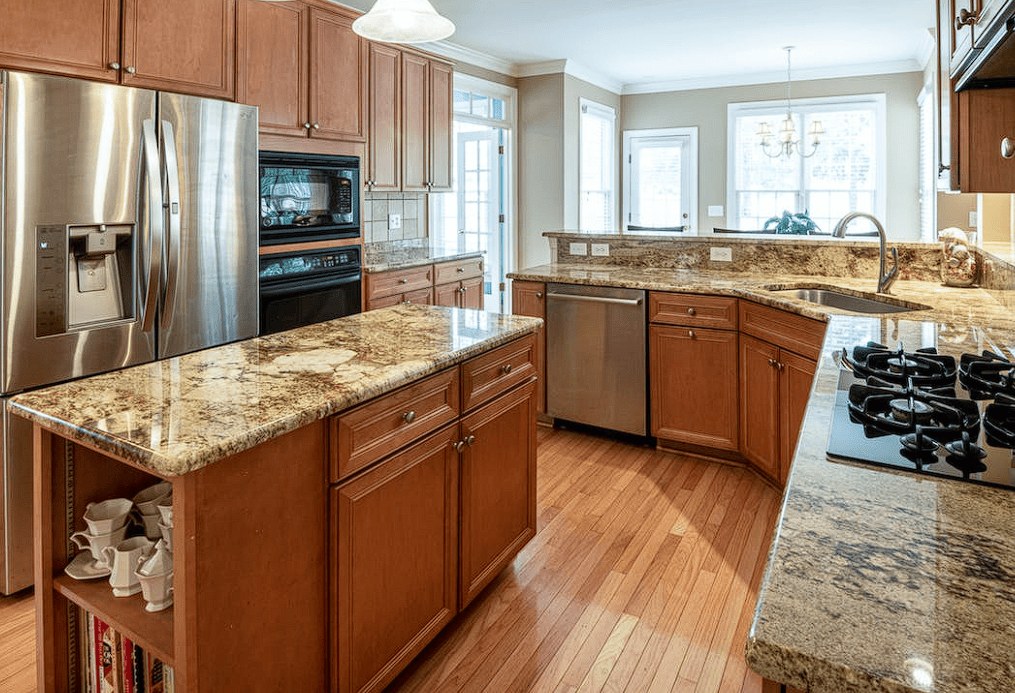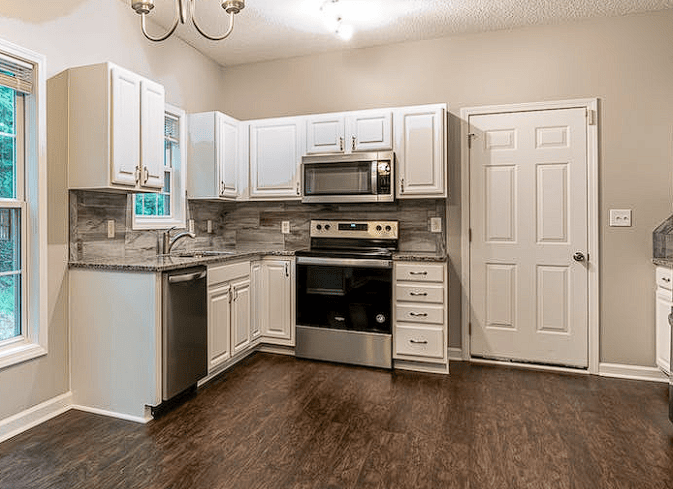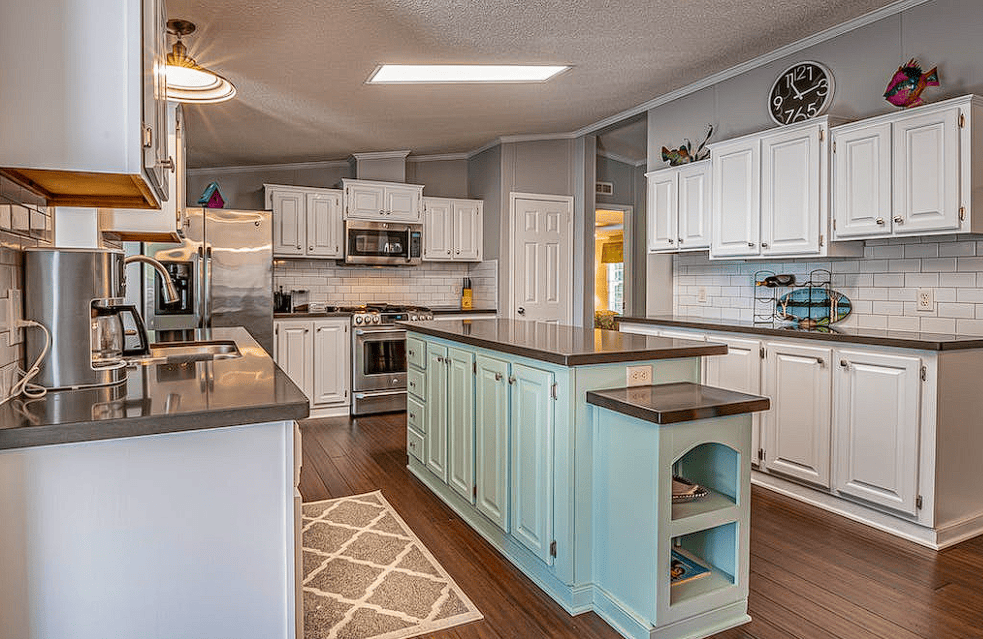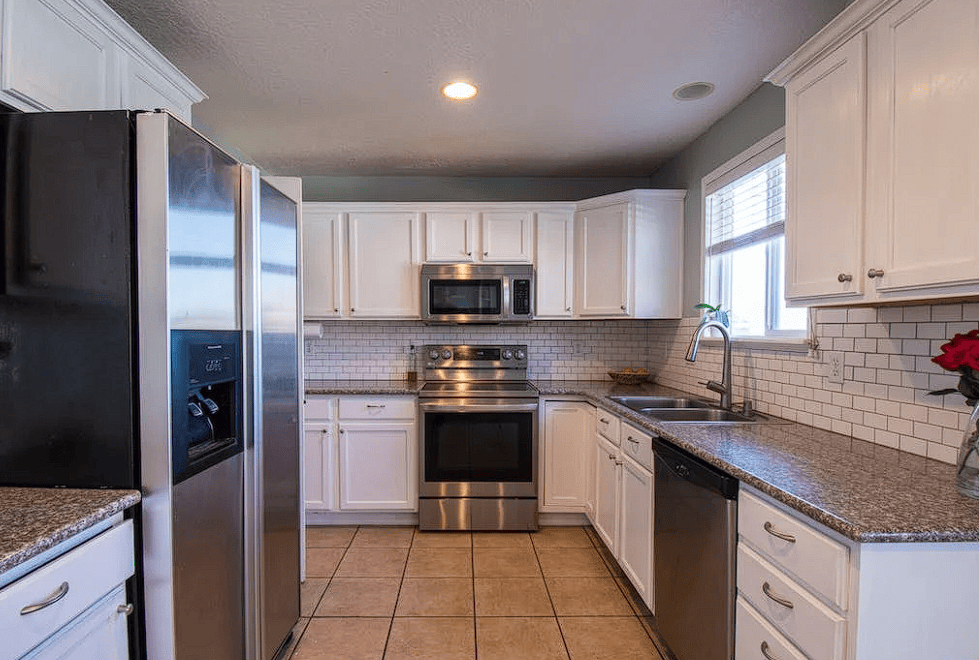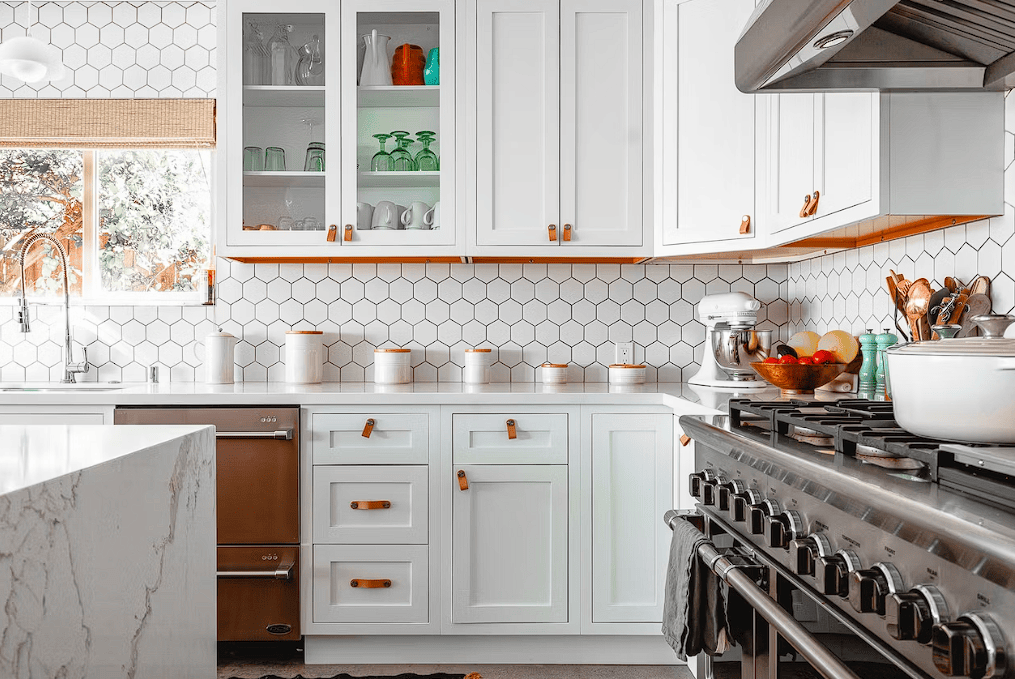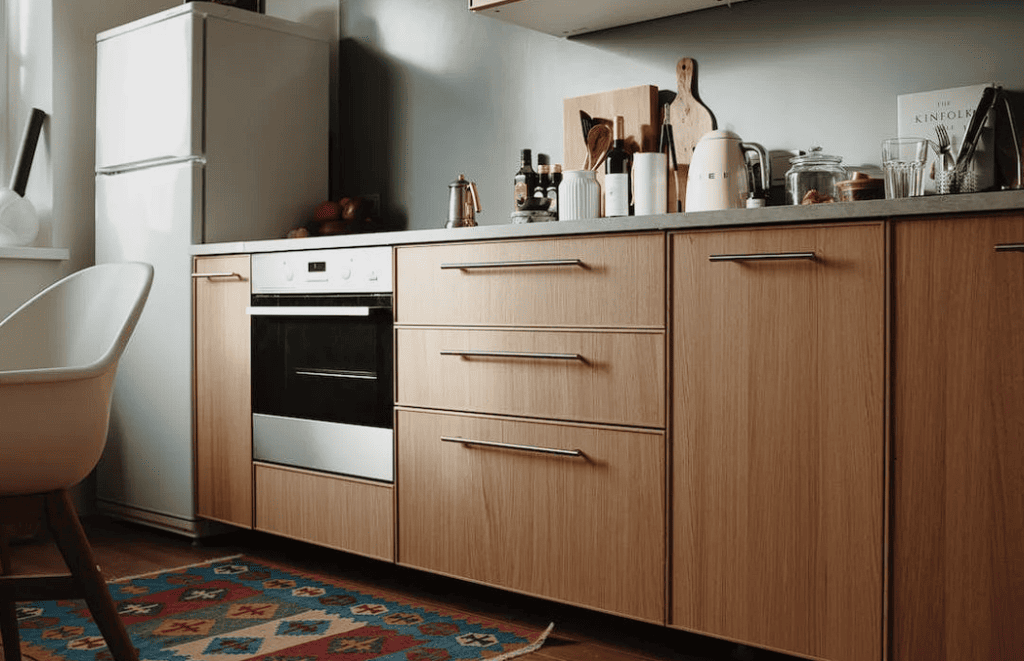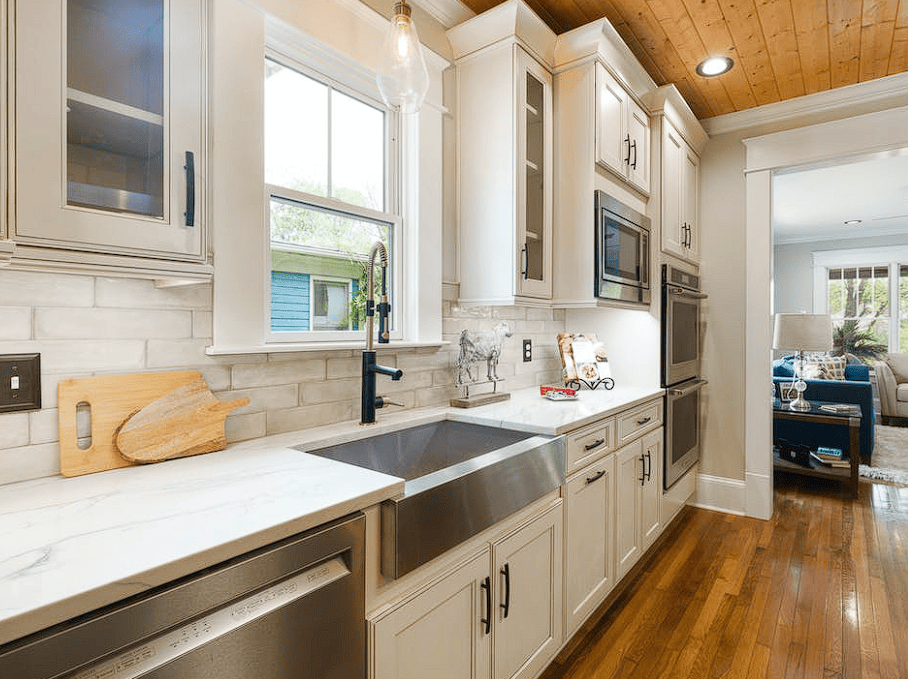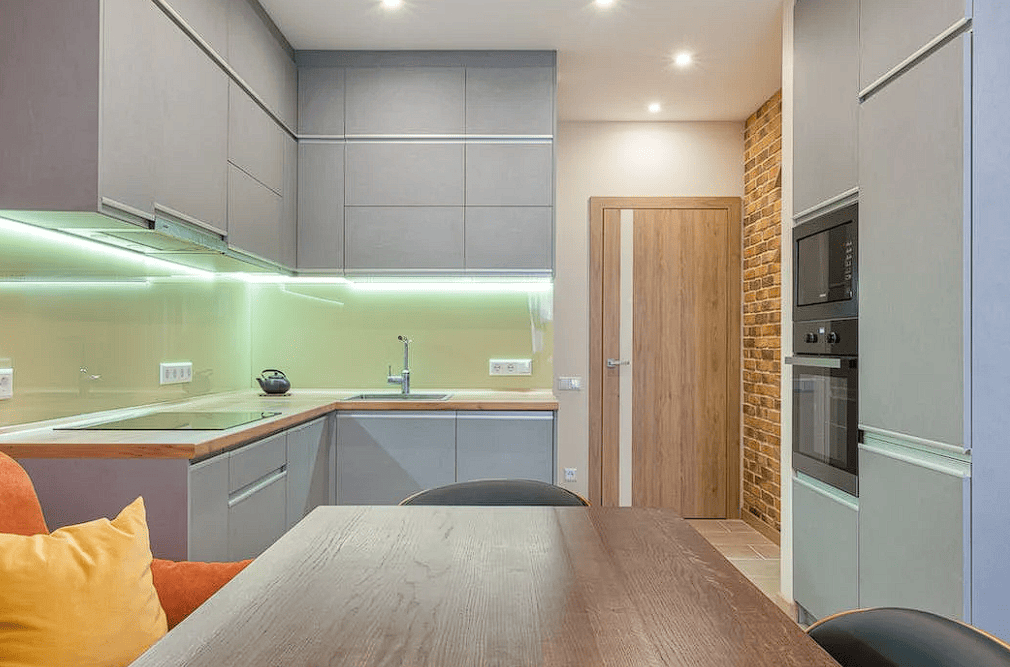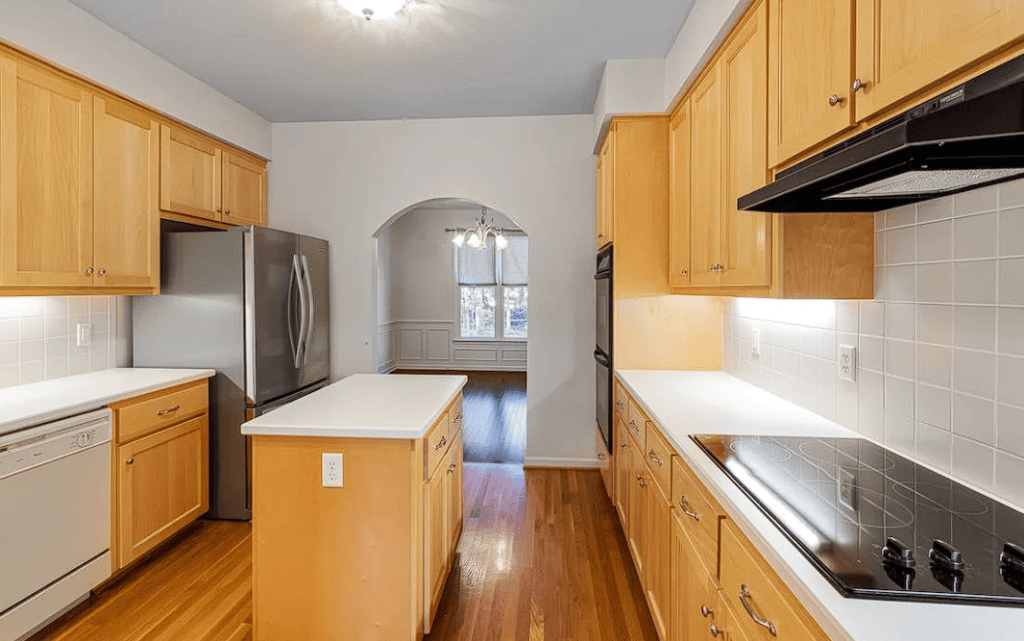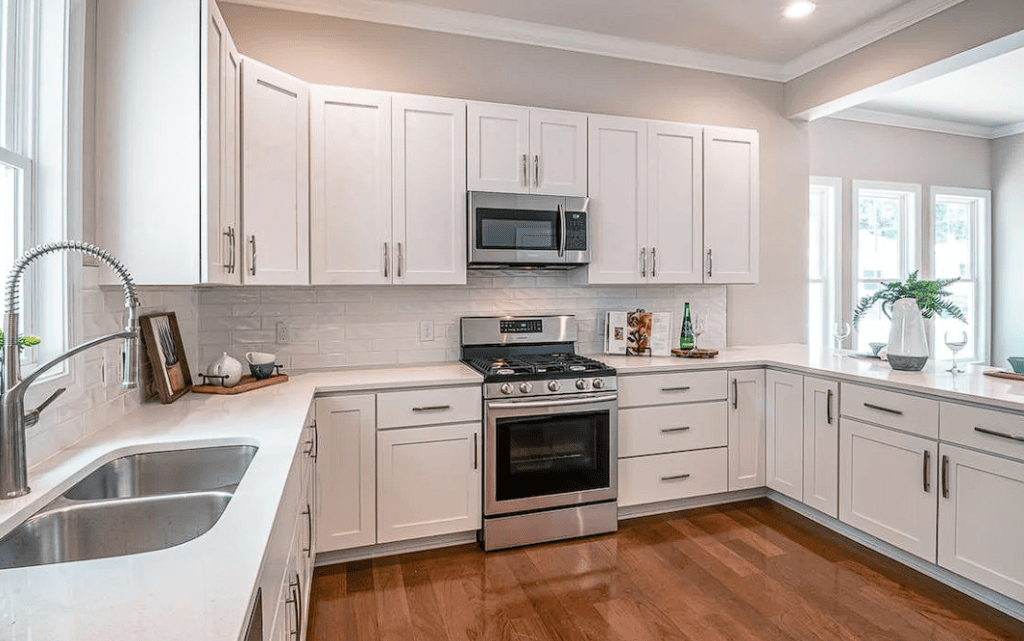The performance, appearance, and resale value of your home can all be significantly impacted by the material you choose for your kitchen cabinets. Finding the right material out of all the options available can be challenging. In this piece, we'll compare and contrast four of the most common materials for kitchen cabinets: solid wood, plywood, medium-density fibreboard, and particleboard.
It will also look into alternative materials like glass and stainless steel. You can choose the best material for your kitchen cabinets by doing some research into the pros and cons of each option and taking into account factors like cost, durability, aesthetics, and upkeep needs.
What Materials Are Kitchen Cabinets Made Of?
Wood and wood-like materials are the standards for kitchen cabinet construction. Wood, plywood, particleboard, fibreboard, etc., are all fair game. Kitchen cabinet materials, whether solid wood or wood-based, are a matter of personal preference and, of course, budget. But not every kitchen cabinet is made from wood. Glass display cases are an option depending on the mood and style you're going for.
Hardwood
Hardwood is solid wood, and it is widely considered to be the most long-lasting material for kitchen cabinets. Hardwoods like hickory and maple, in contrast to softer woods like walnut and mahogany, are more resistant to scratches and dents. However, the former will be more expensive because of its superior durability and quality.
Cherry is a domestic hardwood that is prized for its beautiful reddish-brown hue and distinctively figured grain. For a modern, luxurious, and cosy feel in the kitchen, this is the material of choice. In addition to teak, birch, beech, oak, mahogany, and teak are also common hardwood options. Hardwood cabinets are the most long-lasting option, but they can be quite expensive to purchase.
Pros
There is a wide variety of grains, hues, and textures to choose from when working with wood. The material's inherent irregularities are part of what gives it such a unique look. It can be easily incorporated into both classic and contemporary settings. Polished wood is easy to maintain and clean. Don't use commercial cleaners or anything else that contains a lot of acids.
Cons
It's important to buy high-quality wood to avoid problems like warping and denting from cheaper boards. Humidity fluctuations warp the wood's core and surface, and it needs regular polishing to keep its straight and smooth grain. The material is both expensive and time-consuming to work with.
Plywood
Plywood, like other types of solid wood, is made from glued and laminated wood that has a hardwood veneer applied to one side. It's worth noting, though, that not all plywood is created equal. Plywood from grade A is less expensive than AA, and grades B, C, D, and E are even more affordable. The four lowest levels will all look inferior.
The cheapest and lowest-quality option is "shop grade" or "economy" plywood. A skilled cabinetmaker, however, can often hide these flaws entirely. The most expensive option is Grade AA plywood because of its high quality and prestige.
Pros
Plywood's low price makes it a popular option, but the wood also has a number of inherent benefits. The material is more stable than other types of wood and naturally resistant to moisture. Multiple layers of wood veneer are glued and pressed together to create plywood. Plywood's superior stability is largely attributable to its capacity to retain screws and bolts.
Cons
Plywood's layered construction gives it surprisingly high strength and flexibility, but it isn't without its drawbacks. Splinters and difficulty cutting are both possible due to the multiple layers. When plywood absorbs water, whether from a leak or a spill, it can swell and become quite heavy, which could cause irreparable harm.
Medium Density Fiberboard
Medium Density Fibreboard is manufactured by mixing wood fibres, wax, and a resin binder made from hardwood or softwood residuals. Panels are made from this material and used in subsequent building endeavours. Particle board, which has a low density, isn't suitable for the structural components of the cabinets but can be used for the exteriors to cut costs. Extreme densities are powerful but often come at a high cost.
Pros
Density, Moderate Dense and heavy fibreboard (or MDF) is a type of fibreboard. Because of its superior smoothness to plywood and resistance to cracking and peeling, MDF is frequently used in well-liked products like IKEA furniture. If you ever decide you want a new look for your kitchen, you can simply paint over the old colour. Because it is not made of solid wood, MDF is unaffected by temperature changes.
Cons
Even minor damage, such as a chip or crack, can be difficult to fix in MDF. MDF expands when exposed to water, and there is a lot of water in a kitchen. Because of its manufacturing process, MDF lacks a natural grain, but it can be veneered to achieve the desired appearance and feel.
Veneer
Thin layers of solid hardwood are peeled off of a log to create a veneer. Panels are produced by adhering thin veneers to particleboard or fibreboard and pressing them flat. It's light and cheap, so it's used more as a finish than in the construction of cabinets. However, veneered cabinets permit attractive veneers to be applied.
Pros
Because only very thin slices of solid wood are used to cover enormous areas, wood veneers are both environmentally friendly and cost-effective. Kitchens with hard corners can be softened with veneers. It is possible to treat veneers to make them matte, semi-gloss, or highly glossy.
Cons
Exposure to sunlight can cause veneers to fade. Like wood, the sheets eventually need to be polished. If the sheet is not polished properly, water stains may become visible. Veneers are not durable against scratches.
Stainless Steel
While stainless steel may not be the first material that comes to mind when planning new kitchen cabinets, it is a popular choice for those who prefer a more contemporary style. If you're a fan of cooking shows, you've probably noticed that some chefs opt for stainless steel cabinetry.
Pros
Stainless steel cabinets are a great choice because they are easy to maintain and complement modern appliances. Stainless steel is stronger than most other materials and lasts much longer as a result. Stainless steel countertops, for example, will be long-lasting and heat-resistant, but only if you use them in specific ways. The stainless steel countertop will not be damaged if you put a hot pot directly on it from the stove.
Cons
The problem of fingerprints and smudges is an unavoidable downside to the shiny, modern look. Maintaining a spotless kitchen requires constant wiping down of surfaces. In terms of aesthetics, though, an excessive amount of stainless steel can make your kitchen look more like a commercial kitchen. The surface itself may be noisy, easily scratched, and expensive.
Other Common Materials
The most popular options for kitchen cabinet materials are those already mentioned, but there are other options available as well. High-gloss cabinets are available to shoppers and consist of standard cabinetry components coated in a glossy finish. You can get these in a wide variety of coatings to suit your personal taste.
Aluminium, stainless steel, glass, and polythene are some of the other materials used in contemporary kitchen cabinets. Cabinets made of aluminium or stainless steel give the room a modern and/or futuristic feel while also being extremely sturdy. They are, however, easily damaged by scratches and fingerprints.
Polythene cabinets share a common ancestor with the marine and swimming pool industries. They can withstand natural elements like water and sunlight without losing their vivid hues. For a modern and opulent feel, glass cabinets are the way to go when showcasing fine china, silverware, and other valuables. When compared to other materials used for kitchen cabinets, however, they are quite fragile.
Types Of Wood Cabinets
Wood cabinets come in a wide variety of colours and styles. Oak, maple, hickory, cherry, birch, ash, and pine are just some of the alternatives. If you're in the market for new wooden storage units, have a look at our helpful buying guide.
Red Oak Wood Cabinets
Red oak is a great choice for wood kitchen cabinets because it is sturdy, long-lasting, and affordable. Wood is a common material for traditional cabinetry because of its wide availability in colour and finish options and distinctive grain patterns. Stock, semi-custom, and custom cabinets can all be made out of this wood.
White Oak Wood Cabinets
White oak is just as sturdy as its red oak relative and even more so. White oak, with its warmer tones and finer grain, is frequently quarter-sawn for custom cabinetry, especially when an Arts and Crafts or vintage aesthetic is desired. White oak is typically a special-order item.
Hard Maple Wood Cabinets
Hard maple, with its fine grain and light colour, is a less dense but more expensive alternative to oak. Maple is a common material for both semi-custom and custom cabinets because it is durable and attractive; it can be stained, but a clear or natural finish is typically preferred for a more modern aesthetic.
Hickory Wood Cabinets
Hickory, like the kind used for the island in this kitchen, is more lightweight than oak but just as strong. Although it takes stains well, this pale yellow wood is typically left unstained to highlight its blond tones, much like maple. Hickory is a unique option for both fully custom and semi-custom cabinetry, and it works especially well in farmhouse-style kitchens.
Cherry Wood Cabinets
Kitchen cabinets made of cherry wood are exceptionally durable. Cherry's design versatility can lend a kitchen either an elegant and formal traditional vibe or a fresh and modern vibe, depending on the style you're going for. The fine-grained, smooth wood ages to a deep red or reddish-brown hue. This type of cabinet material is commonly stained to achieve a consistent hue.
Birch Wood Cabinets
Birch is a dark, hard wood with a fine grain that is both durable and attractive. It's great for finishing and can pass for more expensive wood. It can be stained to look like cherry or maple for a convincing "faux" finish. Despite its tendency towards uneven colouring, birch is a low-cost stock and semi-custom wood option.
Ash Wood Cabinets
Ash is a strong and durable alternative to oak, with a similar strength to oak but a lighter colour and more pronounced figure. A clear or natural finish gives this straight-grain wood a more modern feel. Semi-custom lines don't typically offer it, but custom kitchen cabinetry is where you'll most often find it.
Pine Wood Cabinets
Pine is the only softwood used for cabinetry, and unlike hardwoods, it shows dents more easily. This kitchen's island and ceiling are made of pale yellow wood that can be stained and typically has knots to emphasise traditional and country styles. White pine, both Eastern and Western, can be found in certain semi-custom lines.
Conclusion
The most important details in this text are the four most common materials for kitchen cabinets: solid wood, plywood, medium-density fibreboard, and particleboard. It also looks into alternative materials like glass and stainless steel. Hardwood is the most long-lasting material for kitchen cabinets, but it can be expensive. Cherry is a domestic hardwood that is prized for its beautiful reddish-brown hue and distinctively figured grain. Hardwood cabinets are the most long-lasting option, but they can be expensive to purchase.
Wood has a wide variety of grains, hues, and textures to choose from and is easy to maintain and clean. The most important details in this text are the pros and cons of buying high-quality wood. Plywood is made from glued and laminated wood with a hardwood veneer applied to one side. It is more stable than other types of wood and naturally resistant to moisture. Medium Density Fiberboard is manufactured by mixing wood fibres, wax, and a resin binder made from hardwood or softwood residuals.
Medium Dense and heavy fibreboard (MDF) is a type of fibreboard with superior smoothness and resistance to cracking and peeling. It is often used in well-liked products like IKEA furniture and is unaffected by temperature changes. MDF is a popular choice for kitchen cabinets, but it can be veneered to achieve the desired appearance and feel. Veneers are environmentally friendly and cost-effective, but they can fade and need to be polished. Stainless steel is a popular choice for those who prefer a more contemporary style, but it can be noisy, easily scratched, and expensive.
Stainless steel countertops are long-lasting and heat-resistant, but fingerprints and smudges can be a problem. The most popular kitchen cabinet materials are high-gloss cabinets, aluminium, stainless steel, glass, and polyethene. Wood cabinets come in a variety of colours and styles, including red oak, white oak, and hard maple. Red oak is sturdy, long-lasting, and affordable, while white oak is quarter-sawn for custom cabinetry. Hard maple is durable and attractive but can be stained or natural.
Hickory Wood Cabinets are a unique option for both custom and semi-custom kitchen cabinetry, especially in farmhouse-style kitchens. Cherry Wood Cabinets are durable and can lend a kitchen either an elegant and formal traditional vibe or a fresh and modern vibe. Birch Wood Cabinets are dark, hard wood with a fine grain that is both durable and attractive. Ash Wood Cabinets is a strong and durable alternative to oak, with a lighter colour and more pronounced figure. Pine Wood Cabinets are pale yellow wood that can be stained and typically has knots to emphasise traditional and country styles.
Content Summary
- Kitchen cabinet material selection impacts the performance, appearance, and resale value of a home.
- Solid wood, plywood, medium-density fibreboard, and particleboard are common materials used for kitchen cabinets.
- Glass and stainless steel are also alternative materials for kitchen cabinets.
- Researching the pros and cons of each material can help to choose the best option for your kitchen cabinets.
- Wood and wood-like materials are the standards for kitchen cabinet construction.
- Hardwood is considered to be the most long-lasting material for kitchen cabinets.
- Hardwoods like hickory and maple are more resistant to scratches and dents.
- Cherry is prized for its beautiful reddish-brown hue and distinctively figured grain.
- Birch, beech, oak, and mahogany are also common hardwood options for kitchen cabinets.
- Hardwood cabinets are the most long-lasting option but can be quite expensive.
- Polished wood is easy to maintain and clean, but commercial cleaners or anything else that contains a lot of acids should not be used.
- Buying high-quality wood is important to avoid problems like warping and denting.
- Humidity fluctuations warp the wood's core and surface, and it needs regular polishing to keep its straight and smooth grain.
- Plywood, like other types of solid wood, is made from glued and laminated wood that has a hardwood veneer applied to one side.
- Not all plywood is created equal, with grades A and AA being more expensive.
- The cheapest and lowest-quality option is "shop grade" or "economy" plywood.
- Plywood's low price makes it a popular option, and is naturally resistant to moisture.
- Multiple layers of wood veneer are glued and pressed together to create plywood.
- Plywood's superior stability is largely attributable to its capacity to retain screws and bolts.
- Plywood's layered construction can result in splinters and difficulty cutting.
- When plywood absorbs water, it can swell and become quite heavy, causing irreparable harm.
- Medium-density fibreboard (MDF) is manufactured by mixing wood fibres, wax, and a resin binder made from hardwood or softwood residuals.
- MDF is frequently used in well-liked products like IKEA furniture and can be painted over if you ever decide you want a new look for your kitchen.
- Even minor damage, such as a chip or crack, can be difficult to fix in MDF.
- MDF expands when exposed to water, making it unsuitable for use in a kitchen.
- MDF lacks a natural grain, but it can be veneered to achieve the desired appearance and feel.
- Veneers are environmentally friendly and cost-effective.
- Veneered cabinets permit attractive veneers to be applied.
- Wood veneers are treated to make them matte, semi-gloss, or highly glossy.
- Kitchen cabinet material is a matter of personal preference and budget.
Frequently Asked Questions
Solid wood and plywood are among the most popular materials for kitchen cabinets due to their durability and classic look.
Particleboard is often the most affordable material for kitchen cabinets, but it may not be as durable as other options.
Solid wood and plywood are typically the most durable materials for kitchen cabinets, but they can also be more expensive.
MDF stands for medium density fiberboard, which is a composite material made from wood fibers and resin. It is often used as a more affordable alternative to solid wood.
Glass cabinets can be practical for displaying items and adding a decorative touch to a kitchen, but they may not be as practical for everyday use as they can show fingerprints and require regular cleaning.
